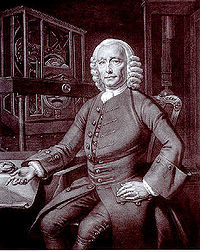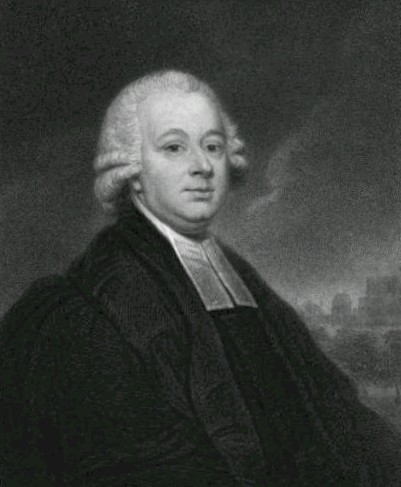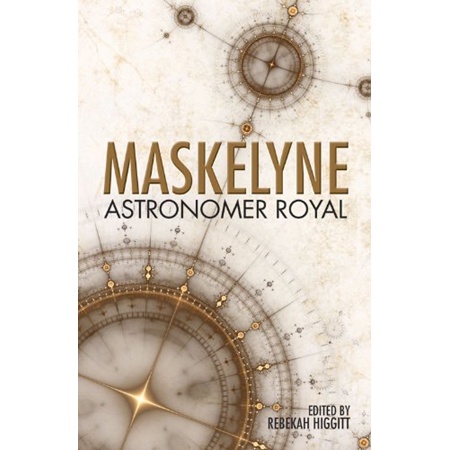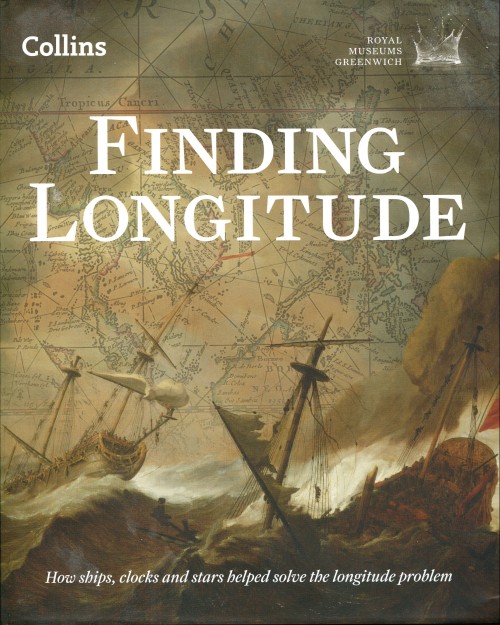Before 1995 probably only a handful of people interested in the history of navigation had ever heard of the English clockmaker John Harrison and the role he played in the history of attempts to find a reliable method of determining longitude at sea. This situation changed radically when Dava Sobel published her book Longitude: The True Story of a Lone Genius Who Solved the Greatest Scientific Problem of His Time[1] in that year. This volume caught the public imagination and very rapidly became one of the most successful popular history of science and technology books of all time. It was followed just three years later by a lavishly illustrated expanded edition. Just one year after that followed the equally lavish television documentary film based on the book. By the year 2000 at the latest John Harrison had become a household name and a British scientific hero on a level with Newton and Darwin.

P.L. Tassaert’s half-tone print of Thomas King’s original 1767 portrait of John Harrison, located at the Science and Society Picture Library,
All of this would have been well and good if Sobel had actually adhered to the first three words of her subtitle, The True Story…, but unfortunately she sacrificed historical accuracy to the expediency of telling a good story, basically reducing a complex historical narrative to the fairy tale of a poor honest hero, John Harrison, overcoming adversity to finally triumph against the evil machination of his dishonest scheming opponent the Astronomer Royal, Nevil Maskelyne. Sobel’s lurid narrative proved, as already stated, commercially very successful but left its readers with a highly distorted view of what actually took place in the long eighteenth century in the endeavours to find a method of determining longitude and the role that the various people involved played in those endeavours. In particular Nevil Maskelyne was left in the popular public imagination looking rather like the devil’s evil cousin.
About five years ago a major historical research project, under the auspices of the Arts & Humanities Research Council, was set up by Cambridge University and the National Maritime Museum in Greenwich on the history of the British Board of Longitude, the official body set up to oversee and direct the search for a method to determine longitude at sea in the eighteenth century. Led by Simon Schaffer for the University of Cambridge and Richard Dunn and Rebekah Higgitt for the National Maritime Museum this project featured a cast of excellent doctoral and post doctoral researchers some of whose findings can be found on the excellent Longitude Project Blog. To date this research project has produced a remarkable list of achievements. Alongside a volume of papers on the much maligned Nevil Maskelyne, which has just appeared and which I am looking forward very much to reading,
the whole of the Board of Longitude archive has been digitized and made available online to researchers. Currently on at the Museum in Greenwich is a major exhibition Ships, Clocks and Stars: The Quest for Longitude, which you can still visit if you hurry, it closes on the 4th of January 2015. If you are uncertain whether or not it’s worth visiting, it has just been awarded the British Society for the History of Science Great Exhibitions Award for 2014! If like myself you are unable for some reason to make the journey to Greenwich do not despair you can bring the exhibition into your own living room by acquiring the accompanying book Finding Longitude: How Ships, clocks and stars helped solve the longitude problem[2] by Richard Dunn and Rebekah Higgitt, a review of which is the actually subject of this post.
My review is actually very simple this book is magnificent. If you have any interest in the histories of navigation, sea voyages, astronomy, clocks, John Harrison, Nevil Maskelyne, Tobias Mayer, and a whole ship’s cargo of other related and interrelated topics then buy this book! I guarantee you that you won’t regret it for one second. It combines thorough research, first class scholarship, excellent writing, unbelievably lavish illustrations, fascinating narratives and historical accuracy in one superb and, for what it is, surprisingly low priced large format volume. Unlike Sobel’s, from a historians standpoint, ill-starred volume, this work really does tell the true story of the solution of the longitude problem with all its complex twists and turns giving all the participants their dues. Although written for the general reader this book should also find a home on the bookshelves of any working historian of navigation, astronomy, horology, sea voyages or just the science and technology of the long eighteenth century.
This book will take you on a voyage through the choppy waters of eighteenth century science, politics and technology and deliver you up on the shores of the nineteenth century much more knowledgeable then you were when you boarded ship and entertain and delight you along the way. It will also make for a first class Christmas present.
[1] Dava Sobel, Longitude: The True Story of a Lone Genius Who Solved the Greatest Scientific Problem of His Time, Fourth Estate, London, 1995
[2] Richard Dunn & Rebekah Higgitt, Longitude: How Ships, clocks and stars helped solve the longitude problem, Collins and Royal Museums Greenwich, London 2014




Bravissimo!
And if you like the exhibition/book, the Science Museum (London) is hosting an event on Wednesday 17th December, at which various members of the research and exhibition teams will be discussing the project. Find out more at http://www.sciencemuseum.org.uk/about_us/new_research_folder/news_and_events/upcoming_events.aspx
Two nonce comments.
1) I first heard about Harrison and the Board of Longitude from the excerpt from Lloyd Brown’s The Story of Maps that was reprinted in Newman’s anthology The World of Mathematics (1956). I fear it does rather paint Harrison as the underdog, fighting against the hide-bound and less-than-impartial Board.
2) I checked Amazon, which lists Finding Longitude for $17.05 (new), remarkably cheap indeed. But curiously, it says it has used copies for $28.91!
That’s one of the weird things in Amazon, I think it’s an artefact of the automatic pricing software used by some dodgy 2nd hand sellers/ re-printers.
As for the subject, I don’t recall the book traducing Maskelyne quite as much as the OP makes out, but certainly it did make the Board more partisan that is perhaps the case.
By “the book”, do you mean Sobel’s book, or Brown’s? I haven’t read Sobel’s book (nor do I intend to, given its bad rep here). Of Brown’s book, I’ve read only the excerpt reprinted in The World of Mathematics, and that decades ago.
Going with the flow as you read you were almost certainly not aware how many of Sobel’s statement about Maskelyne or interpretations of Maskelyne’s action are in fact historically inaccurate or even completely false and always negatively so.
That’s right, when I read the Brown excerpt, I swallowed the account hook, line, and sinker. I only re-evaluated when I read some of the Sobel-debunking posts here and on the H-word blog.
Two comments from me
1) Thanks very much Thony for your generous comments and tweets! It’s very much appreciated.
2) I tell some of the story of the intertwined reputations of Maskelyne and Harrison in my chapter in the Maskelyne: Astronomer Royal book (also on Amazon! http://www.amazon.co.uk/Maskelyne-Astronomer-Royal-Rebekah-Higgett/dp/0719809126). Rupert Gould’s 1923 history of the marine chronometer was (unsurprisingly) pro-Harrison and unsympathetic to Maskelyne, partly as uninterested in the development of astronomical methods of navigation. Humphrey Quill’s 1966 biography of Harrison was, much fairer to Maskelyne and the Board of Longitude, and acknowledged the Harrisons’ paranoia and the one-sided nature of the accounts of events that they left (much of which were written long after). Sobel’s immediate inspiration was, however, the Longitude Symposium in Harvard that led to the publication of Will Andrewes (ed) Quest for Longitude (1996), which is heavily biased to the timekeeper story and Harrison (over Maskelyne) in particular. Her mistakes definitely follow the expert accounts she heard.
Reblogged this on Artes Mechanicae and commented:
I haven’t posted on the work I’ve been making & exhibiting but I am often influenced, even if imperceptibly, but things nautical. Thony is one of my handy reference people. He also refers the work of others.
Pingback: The Problem of Science Stories – Uncertain Principles
Pingback: The Problem of Science Stories [Uncertain Principles] | Gaia Gazette
Pingback: Whewell’s Gazette: Vol. #26 | Whewell's Ghost
Pingback: Whewell’s Gazette: year2, Vol. #45 | Whewell's Ghost
Pingback: The True Story of a Lone Genius Who Solved the Greatest Scientific Problem of His Time | The Renaissance Mathematicus
Pingback: Marine chronometer, lunar distance method or something else altogether? | The Renaissance Mathematicus